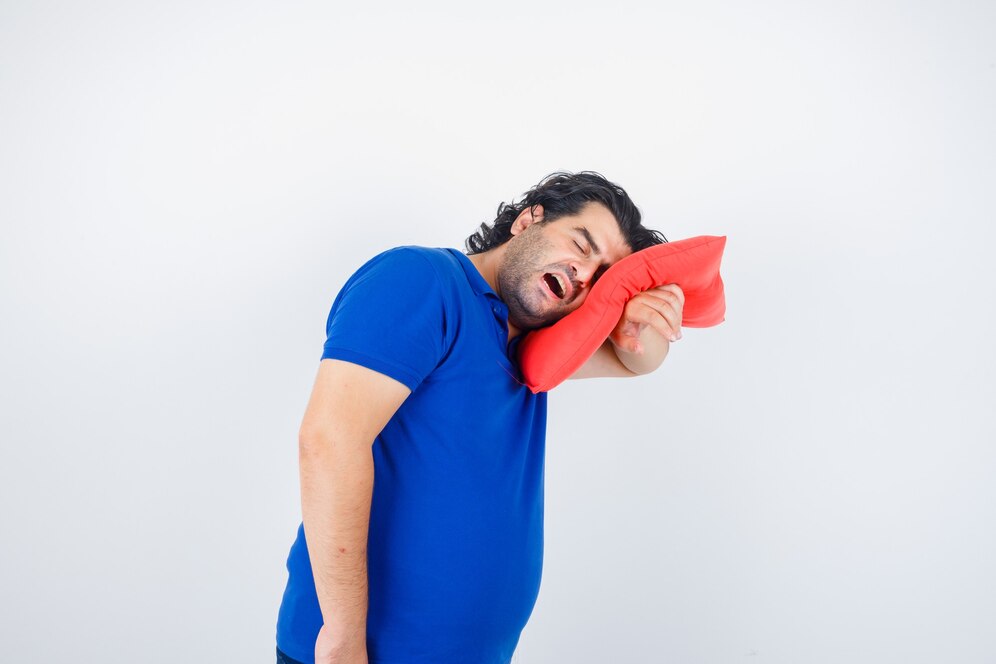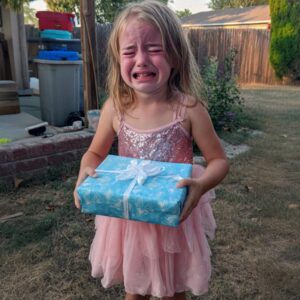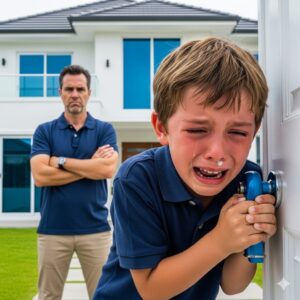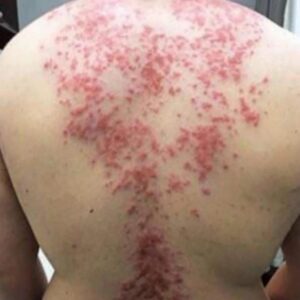Why People Drool During Sleep: Causes, Implications, and Effective Solutions
Introduction
Sleep is vital for health, yet many of us wake up with a damp pillow and a sense of mild embarrassment. Nocturnal drooling—also known as nocturnal hypersalivation—is common and, in most cases, harmless. However, when excessive or accompanied by other symptoms, it can indicate underlying issues that merit attention. This comprehensive article explores the physiological mechanisms behind saliva production, the factors that promote drooling during slumber, when you should seek professional advice, and practical strategies to minimize nighttime saliva loss. By the end, you’ll have a clear understanding of why drooling occurs and what you can do to keep your pillow dry.
1. The Physiology of Saliva Production
Saliva is more than just water in the mouth; it is a complex fluid secreted by three major pairs of salivary glands (parotid, submandibular, and sublingual) and numerous minor glands throughout the oral mucosa. Its primary components include water, electrolytes, mucus, enzymes (notably amylase and lipase), and immunoglobulins. Together, these constituents serve several essential functions:
-
Digestion Initiation: Enzymes in saliva begin the breakdown of starches and fats as soon as food enters the mouth.
-
Oral Lubrication: Mucus in saliva coats the oral mucosa and food bolus, facilitating chewing, swallowing, and speech.
-
Protection and Remineralization: Saliva neutralizes acids, delivers calcium and phosphate for tooth repair, and contains antimicrobial agents that help control bacterial populations.
Under normal waking conditions, saliva is continuously swallowed, keeping the oral cavity moist without noticeable pooling. An average adult produces between 0.5 and 1.5 liters of saliva per day, with secretion rates varying based on hydration, circadian rhythms, and neural inputs. However, during sleep, this finely tuned system can become unbalanced, leading to saliva escaping the oral cavity and saturating the pillow.
2. Sleep Architecture and Muscle Relaxation
Sleep unfolds in a cyclical pattern of non-rapid eye movement (NREM) and rapid eye movement (REM) stages, each with characteristic physiology. During NREM sleep, particularly in the deeper stages (N3), muscle tone diminishes significantly. In REM sleep—when dreaming is most vivid—muscle atonia becomes pronounced, affecting virtually all skeletal muscles except those responsible for eye movements and diaphragm-driven breathing.
2.1 Impact on Oral and Pharyngeal Muscles
As muscle tone decreases, the tone of the orbicularis oris (the muscle encircling the mouth) and the muscles responsible for keeping the jaw closed (masseter and temporalis) relax. This relaxation can cause the mouth to fall open slightly, creating an opening through which saliva can escape. At the same time, the swallowing reflex—normally triggered when saliva pools in the posterior mouth—is less sensitive, so smaller amounts of saliva fail to elicit a swallow.
2.2 Influence of Sleep Depth
The deeper the sleep, the greater the muscle relaxation and the less frequent the spontaneous swallowing reflex. Individuals who experience prolonged periods of slow-wave sleep (deep NREM) or extended REM cycles—such as those recuperating from sleep deprivation—may therefore be more prone to drooling.
3. Sleeping Position: Gravity’s Role in Drooling
Your preferred sleep posture has a direct bearing on whether saliva pools in the back of the mouth or spills forward onto the pillow.
-
Prone (Stomach) Position: Sleeping face-down promotes drooling because gravity pulls saliva toward the front of the mouth. Even a slight mouth opening allows liquid to seep out easily.
-
Side Position: Resting on one side positions the corner of the mouth below the central oral cavity, creating a low point for saliva to collect and escape.
-
Supine (Back) Position: Sleeping on your back encourages saliva to drain posteriorly toward the throat, where it is more likely to be swallowed unconsciously. Consequently, back sleepers tend to drool less than those who lie on their stomachs or sides.
Adjusting your sleep position—either by consciously training yourself to sleep on your back or by using positional aids such as specialized pillows or body wedges—can significantly reduce drooling incidents.
4. Respiratory Factors and Nasal Congestion
When nasal breathing is impeded, whether by a common cold, allergies, or structural issues, mouth breathing becomes the default. This shift can have two major effects on drooling:
-
Open-Mouth Breathing: To draw air through the mouth, the mandible and lips part, widening the oral aperture. This partially open mouth provides an outlet for saliva to escape.
-
Reduced Swallowing: Mouth breathing demands conscious muscular control of the tongue, cheeks, and lips, diverting attention from the swallowing reflex.
4.1 Common Causes of Nasal Obstruction
-
Allergic Rhinitis: Seasonal or perennial allergens trigger nasal mucosal swelling and mucus overproduction.
-
Infectious Rhinitis (Cold or Flu): Viral infections inflame nasal passages and sinus cavities, leading to congestion.
-
Sinusitis: Inflammation of the sinus linings can cause persistent blockage and postnasal drip, further complicating normal breathing patterns.
-
Deviated Septum and Nasal Polyps: Structural deviations can chronically impair nasal airflow, promoting habitual mouth breathing and associated drooling.
Addressing nasal congestion—through saline rinses, topical corticosteroids, antihistamines, or surgical correction of structural issues—often yields a marked reduction in nighttime drooling.
5. Hypersalivation (Sialorrhea) and Its Origins
Hypersalivation, defined as abnormally increased saliva production, can exacerbate nocturnal drooling. While saliva normally aids in digestion and oral hygiene, excessive volumes may overwhelm swallowing capacity, especially during sleep.
5.1 Potential Triggers of Hypersalivation
-
Oral Infections and Inflammation: Dental abscesses, gingivitis, and mucositis can stimulate local glands to upregulate saliva secretion as part of an inflammatory response.
-
Tonsillar Hypertrophy: Enlarged tonsils and adenoids can obstruct the pharyngeal airway, leading to mouth breathing and reflexive hypersalivation.
-
Dietary Factors: Acidic or spicy foods, as well as highly viscous textures, may provoke salivary reflexes.
-
Systemic Conditions: Gastrointestinal disorders, such as peptic ulcers and gastritis, can generate a cephalad vagal reflex that increases salivation.
-
Medication Side Effects: Certain drugs—particularly cholinergic agonists, antipsychotics, and some anticonvulsants—directly stimulate salivary glands or alter neural regulation.
When hypersalivation is suspected, a thorough medical and dental evaluation can identify reversible causes. In chronic or refractory cases, anticholinergic agents or localized botulinum toxin injections into salivary glands may be considered under specialist guidance.
6. Gastroesophageal Reflux Disease (GERD) and Nocturnal Drooling
GERD occurs when stomach contents, including acid, reflux into the esophagus and occasionally into the oropharynx. The resultant irritation can provoke a protective salivary response; saliva helps neutralize acid and soothe inflamed tissues. When reflux intensifies at night—due to lying horizontally, which no longer leverages gravity to keep stomach contents in place—excessive salivation may drip into the mouth and spill onto bedding.
6.1 Mechanisms Linking GERD and Sialorrhea
-
Acidic Irritation: Refluxate contacting the lower esophagus triggers chemoreceptors that send afferent signals via the vagus nerve to stimulate salivary glands.
-
Protective Neutralization: Increased saliva production helps buffer acid pH, but during sleep, the absence of wakeful swallowing means more saliva pools in the mouth.
6.2 Managing Reflux-Related Drooling
-
Lifestyle Modifications: Elevating the head of the bed by 6–8 inches, avoiding late meals, and refraining from alcohol or caffeine can reduce nocturnal reflux episodes.
-
Dietary Adjustments: Limiting fatty, acidic, or spicy foods—known reflux triggers—can diminish both acid exposure and compensatory saliva surges.
-
Pharmacotherapy: Proton-pump inhibitors (PPIs) and H2 receptor antagonists effectively suppress gastric acid secretion, easing reflux symptoms and the associated hypersalivation.
7. Neurological and Muscular Disorders
Certain neurological conditions disrupt the coordination of swallowing and the maintenance of oral musculature tone, leading to nocturnal drooling:
-
Parkinson’s Disease: Progressive loss of dopaminergic neurons impairs facial muscle control and slows the automatic swallowing reflex, resulting in sialorrhea.
-
Cerebral Palsy: Neuromuscular incoordination from early brain injury can weaken oral motor function and reduce voluntary swallowing.
-
Amyotrophic Lateral Sclerosis (ALS): Degeneration of motor neurons leads to tongue fasciculations and weakened buccal muscles, compromising saliva clearance.
-
Stroke and Traumatic Brain Injury: Lesions affecting the bulbar region or cortical swallowing centers can severely impair deglutition.
In these populations, drooling is often one of several swallowing difficulties (dysphagia) and may contribute to social discomfort, skin maceration, and aspiration pneumonia. Management typically involves multidisciplinary interventions—speech therapy, orofacial exercises, pharmacological agents (e.g., glycopyrrolate), and, in some cases, surgical procedures to reduce salivary flow.
8. Medication-Induced Drooling
Various medications can precipitate nocturnal drooling by either increasing saliva production or exacerbating muscle relaxation:
-
Sedatives and Hypnotics: Agents such as benzodiazepines and non-benzodiazepine hypnotics deepen sleep and intensify muscle atonia, lowering the threshold for mouth opening.
-
Antipsychotics: Particularly clozapine and risperidone can cause hypersalivation through antagonism of dopamine receptors in salivary nuclei.
-
Cholinesterase Inhibitors: Used in Alzheimer’s disease (e.g., rivastigmine), these drugs enhance cholinergic transmission, boosting glandular secretion.
-
Certain Antibiotics: Rarely, penicillin derivatives and macrolides have been associated with transient increases in salivary output.
If you suspect a medication is contributing to your drooling, discuss alternatives or dose adjustments with your healthcare provider rather than altering regimens on your own.
9. When to Consult a Healthcare Professional
In most instances, waking up with a damp pillow is a minor inconvenience. However, you should seek medical evaluation if:
-
Drooling Is Excessive or Prolonged: Continual soaking of bedding may indicate hypersalivation or significant muscle hypotonia.
-
Associated Dysphagia: Difficulty chewing, swallowing, or clearing saliva during the day suggests an impairment of the deglutition mechanism.
-
Respiratory Compromise: Noisy breathing or choking episodes at night could signal obstructive sleep apnea exacerbated by pooled saliva.
-
Evidence of Aspiration: Frequent coughing, recurrent chest infections, or unexplained weight loss may point to saliva entering the airway.
-
Neurological Symptoms: Slurred speech, facial weakness, tremors, or other motor deficits warrant prompt neurologic assessment.
A thorough history, physical examination, and, when indicated, referrals to otolaryngology, neurology, or sleep medicine specialists can uncover treatable conditions and improve quality of life.
10. Prevention and Management Strategies
Whether your drooling stems from benign sleep-stage physiology or an underlying health issue, multiple approaches can mitigate the problem:
-
Optimize Sleep Position
-
Back-Sleeping: Encourage supine rest by using a contoured pillow or sleep-positioning device.
-
Elevated Head: Raise the head of the bed to leverage gravity in maintaining mouth closure.
-
-
Improve Nasal Airflow
-
Saline Nasal Irrigation: A daily rinse can clear mucus and reduce mucosal swelling.
-
Allergy Management: Employ intranasal corticosteroids or oral antihistamines during allergy season.
-
Address Structural Obstructions: Consult an ENT specialist for deviated septum correction or polyp removal if indicated.
-
-
Control Acid Reflux
-
Meal Timing: Avoid eating within 2–3 hours of bedtime.
-
Dietary Mods: Limit trigger foods such as tomatoes, chocolate, and peppermint.
-
Pharmacotherapy: Use PPIs judiciously under medical guidance.
-
-
Manage Hypersalivation
-
Chewing Gum: Paradoxically, chewing sugar-free gum during the day can condition the salivary reflex to increase swallowing frequency.
-
Oral Hygiene: Meticulous dental care reduces inflammatory stimuli for gland hyperactivity.
-
Medications: Anticholinergic mouthwashes or systemic agents may be prescribed when drooling is severe.
-
Botulinum Toxin: Injection into major salivary glands offers temporary relief for refractory cases.
-
-
Rehabilitative Exercises
-
Oromotor Training: Targeted exercises strengthen lip closure and tongue positioning.
-
Swallowing Drills: Practicing voluntary swallows can enhance reflexive swallowing during sleep.
-
-
Medication Review
-
Dose Adjustment: Work with your physician to lower doses of depolarizing sleep aids or switch to alternatives less likely to promote drooling.
-
Timing Adjustments: Taking certain medications earlier in the day may reduce their impact on nighttime saliva control.
-
Conclusion
Nocturnal drooling is an often-embarrassing yet usually benign phenomenon rooted in the natural relaxation of muscles and shifts in breathing patterns that occur during sleep. For most individuals, simple modifications—such as altering sleep position or treating nasal congestion—provide sufficient relief. However, persistent or excessive drooling can signal underlying disorders ranging from gastroesophageal reflux disease to neurological impairments.
By understanding the multifaceted causes of sleep-related drooling, you can implement targeted strategies to keep your pillow dry and safeguard your comfort and health. Should drooling interfere with your sleep quality or coincide with other concerning symptoms, do not hesitate to seek professional evaluation. With the right combination of lifestyle adjustments, medical treatments, and rehabilitative exercises, you can restore restful, drool-free nights and wake up energized for the day ahead.






